When St. Mark's Basilica appears before your eyes for the first time, you cannot help but feel deeply moved. With its golden domes, delicate spires and mighty bronze horses, it is the most important church in the city. Yet, we are certain, you have never seen any church like it.
So we'll tell you about the beauty of St. Mark's Basilica in Venice, what not to miss in this splendid temple of art, history, but also the politics of yesteryear, when religion and government were one inseparable whole. We will also let you inside the golden San Marco Basilica, in the presence of priceless masterpieces, such as the famous Pala d'Oro, a dazzling jewel of light and precious stones.
St Mark's Basilica is one of the many wonders of Venice. You will have access to the most visited and popular attractions with our Venice Pass, at great prices: are you ready for an unforgettable trip?
Discover Venice with the Venice Pass
Why is St. Mark's Basilica famous?
St. Mark's Basilica is so famous that it is often called "the Golden Church".
It is such a riot of gold, mosaics and precious stones set in rich architecture that you cannot help but be breathless.
The Basilica was built in the 9th century to house the remains of Venice's patron saint, namely San Marco, in the Crypt, but it has been remodeled and rebuilt many times. In fact, the current construction, somewhat reminiscent of the Holy Apostles church in Istanbul, dates back to a new building begun in 1063.
And, therefore, is it worth going inside the splendid St. Mark's Basilica in Venice?
In this article, not only will we answer the most frequently asked questions regarding this place of worship, but also give detailed info about how to reserve your skip the line tickets to St. Mark's Basilica!.
Get now your tickets!Is San Marco Basilica in Venice worth seeing?
Which is the best way to tell you that St. Mark's Basilica is truly worth seeing?
Seeing it from the outside, with its round lines projecting skyward, is already an incredible thrill. Yet, we assure you that seeing the inside is something you really cannot miss during a trip to the city.
Everything inside St. Mark's Basilica shines so brightly that it seems to possess a light of its own. The tiny gold tiles that dot the mosaics of the vaults make up a whole so brilliant that it has not ceased to enchant and move for centuries.
Here are the things you should visit inside the magnificent Basilica (to understand it is truly worth it!).
The Mosaics of Saint Marks' Basilica
Anyone who enters the interior of the Basilica cannot help but feel overwhelmed by the light that, in a surprising way, almost seems to want to blur the gaze rather than make it clear.
The moment of dizziness, however, is brief, and in less than no time one understands the reason why. The vaults of St. Mark's Basilica are covered everywhere with fabulous mosaics. It is estimated that they cover an area of as much as 8600 square meters / 92570 square feet!
They tell biblical and salvation stories, Old Testament stories and prophecies, and, of course, stories of the Evangelist San Marco.
Don't forget to look at the floor! Parts of it are still covered by the original mosaics made of beautiful polychrome marble!
The Pala d'Oro
If the mosaics can be seen by anyone, the Pala d'Oro (also called the Golden Pall) is accessible only to those who purchase tickets to St. Mark's Basilica (get more info here).
It is located in the chancel of the Basilica and is so beautiful and impressive that it will leave anyone breathless.
It is an antependium, or the front part of the altar, which, in the case of St. Mark's Basilica, is made of gold, silver, precious stones and enamels. The size? 212 x 334 centimeters (6,95 x 10,95 ft)!
The making of the altarpiece, the use of enamels and the elegance of the figures represents the technical and artistic apex of Venetian and Byzantine art.
If in fact the first Pala d'Oro was commissioned in Constantinople in 976 by Doge Orseolo, the second dates from a hundred years later. The one we admire today, however, is the result of a 14th-century restoration commissioned by Doge Andrea Dandolo to the Venetian goldsmith Giovanni Paolo Boninsegna.
So, is it worth buying a ticket to see the Pala d'Oro? We've probably already given you the answer between the lines!
Reserve your tickets to the Pala d'Oro here!St. Mark's Museum
In addition to an enviable collection that succeeds in best introducing the visit to the Basilica, the Museum also reserves a spectacular final surprise. Let's go in order, however (just remember that you can access the St. Mark's Museum only purchasing the ticket).
The Museum of St. Mark's welcomes its visitors on a tour that traces the history and beauty of the mosaics, manuscripts, as well as the sacred screens that belong to the Basilica. You will also see magnificent Persian carpets and wool tapestries.
What catalyzes attention, however, is in truth the Quadriga Marciana (the famous Four Horses of St. Mark's).
The Four Horses, which once stood on the façade of the Basilica, now finds its place inside the museum after extensive restoration work. The famous bronze sculpture was not made in the city, but is a spoil of war from the Fourth Crusade, at the end of the sack of Constantinople. The Quadriga, which was originally placed in a triumphal position on the façade of the basilica, is now inside the museum after a long restoration work.
What about the horses on the façade of the basilica? They are actually a copy created to protect the originals from the elements.
We haven't told you yet what the highlight of the Museum's visit is (yes, there is another one and that's why it's worth reading on...).
The entrance to the terrace of Saint Mark's Basilica
The viewing terrace is also part of the itinerary of the Museum of St. Mark's Basilica.
If visiting the interior of the Basilica is an exceptional experience, so is certainly observing it from above, while surrounded by its rounded domes.
From the top of the Basilica you can take a closer look at some of the details of the façade and have a splendid view of the Piazza.
A truly exceptional viewpoint that will forever remain with you as an indelible memory.
Discover San Marco CathedralSt. Mark's Basilica tickets: how much is the entrance?
Is St. Mark's Basilica free to enter?
We often read online that the entrance to the Basilica as visitors is free. In all truth, only the people attending the religious events enter for free through the Porta dei Leoncini. In fact, for some years now, the Basilica has established a ticket costing 3 euros for all visitors (children are free up to age 6).
These tickets allow access only to St. Mark's Basilica (thus, as we have seen, neither the Museum nor the Pala). However, they can only be purchased on site by standing in line at the Porta San Clemente Ticket Office or at the internal ticket offices.
What if you do not wish to wait in line?
Skip the line tickets to St. Mark's Basilica
What is the best way to visit the Basilica?
Since it is one of the most visited places in the city, the queues in front of the ticket offices can be very long indeed. Not to mention that, as you know, while standing in line, there is no time to visit anything else in the city!
We therefore definitely suggest you to buy online skip-the-line tickets for St. Mark's Basilica, that include the Pala d'Oro and the Museum with the Panoramic Terrace.
With a single ticket, you can in fact visit all accessible areas of the church, choosing in advance only the day and time of your visit!
Discover San Marco CathedralWhen is the Basilica open?
The Basilica is open daily from Monday to Saturday from 09:30 a.m. to 05:15 p.m. (last access 30 minutes before); on Sundays and, in general, on special holidays, the Basilica opens later, starting at 02:00 p.m..
Since it is a place of worship, in any case, it is always a good idea to check opening hours in advance.
How much dedicate to the visit?
We cannot give a universal answer because this is a rather subjective question.
To visit each part of the San Marco Basilica with due calm and attention, however, we suggest you budget no less than two hours (the more the better!).
How to get to the San Marco Basilica in Venice
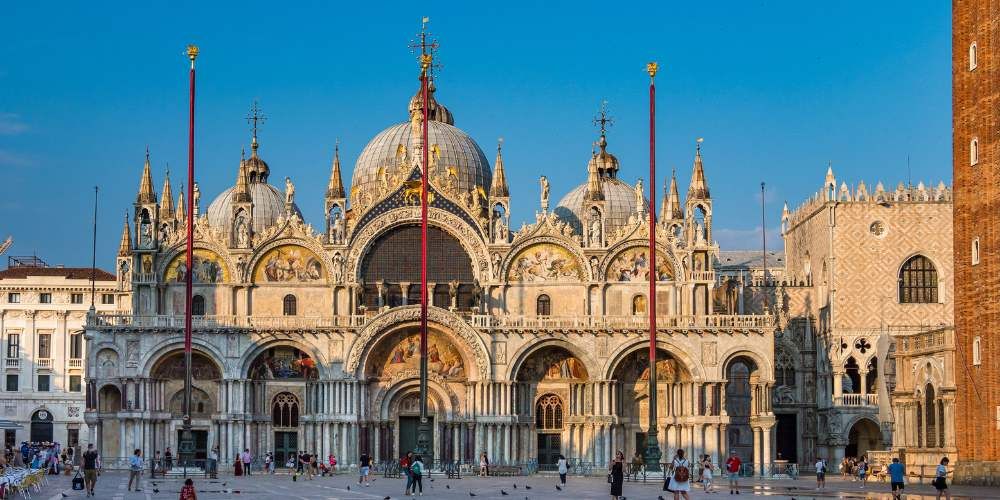
The Basilica is located in St. Mark's Square next to the Doges' Palace.
Getting here is quite easy, even by vaporetto. In fact, lines 1, 51 and 2 will get you off at San Zaccaria, a stop located less than a 400-meter walk from the Basilica.
The other 4 most Frequently Asked Questions about St. Mark's Basilica
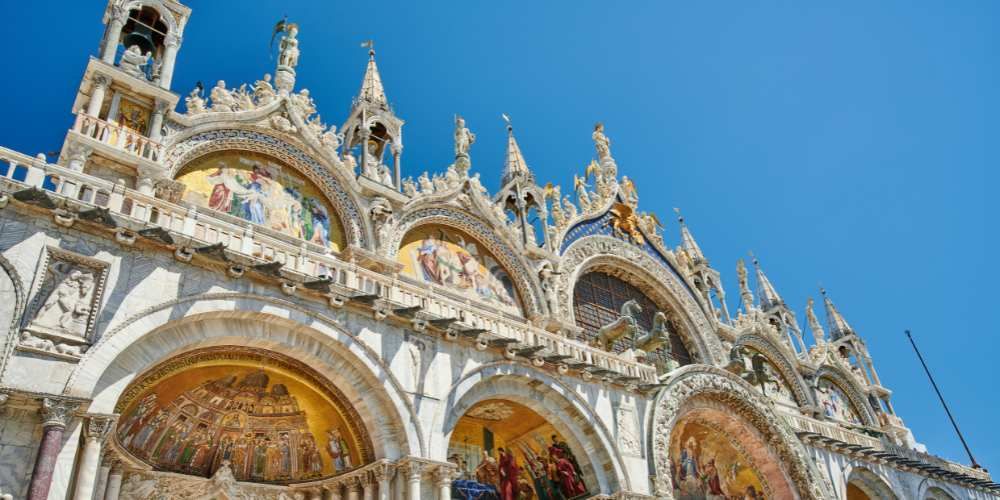
Since it is a sacred place, Saint Mark's Basilica has some strict rules regarding dress code, but also about taking photos or carrying backpacks and bags. We have summarized here the other 4 most common questions regarding access to the church.
4. What is the Dress Code for St. Mark's Basilica?
Like all sacred places in Italy, you cannot enter the interior of San Marco unless you are dressed appropriately for the place. For example, tank tops or shorts cannot be worn. Even when it is very hot, it is therefore necessary to cover shoulders and knees, even with a scarf.
3. Are photos allowed in St. Mark's Basilica?
Inside the Basilica it is forbidden to take photos, either with a camera or cell phone. The only place where taking pictures is allowed is when you are in the Terrace.
2. Is it true that it's not possible to speak out loud?
Yes, during the visit, it is important to avoid talking loudly.
1. Are backpacks allowed in St Mark's Basilica?
Bulky backpacks and duffels cannot be brought into the church; instead, they should be left in the locker provided in Leoncini Square.
Don't forget that no food or drinks can be brought in either!
A fun fact to conclude
St. Mark's Basilica has not always been the most important church of Venice.
At one time, in fact, it was the Church of San Pietro di Castello that assumed the role of cathedral church! The transfer of the role was decided only after the fall of the Serenissima in the early 19th century.
Therefore, in the period of the Republic, the Basilica was not the religious heart of the city as we understand it today. It certainly was politically, since the Doges had a direct connection prepared from the Doge's Palace to the interior of the Basilica.
To learn more about its history, you just have to visit it.
Book your tickets here!About the author
Written on 13/04/2023



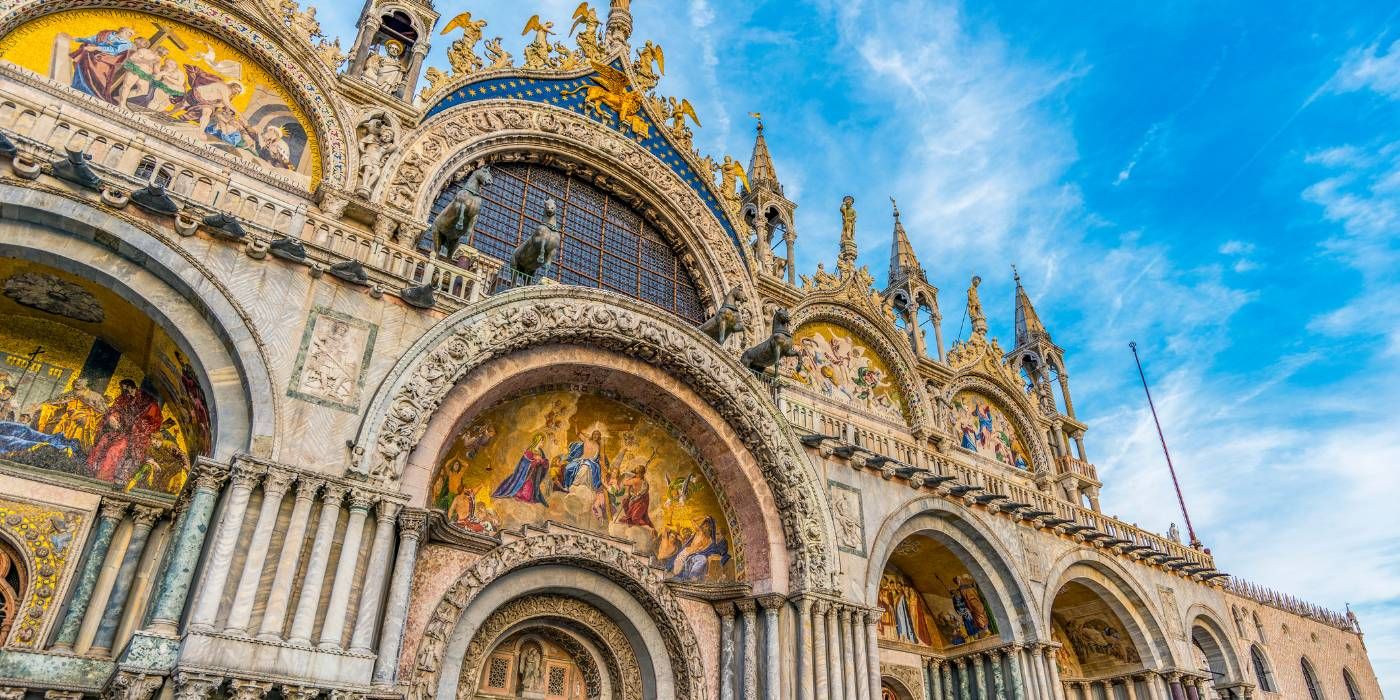

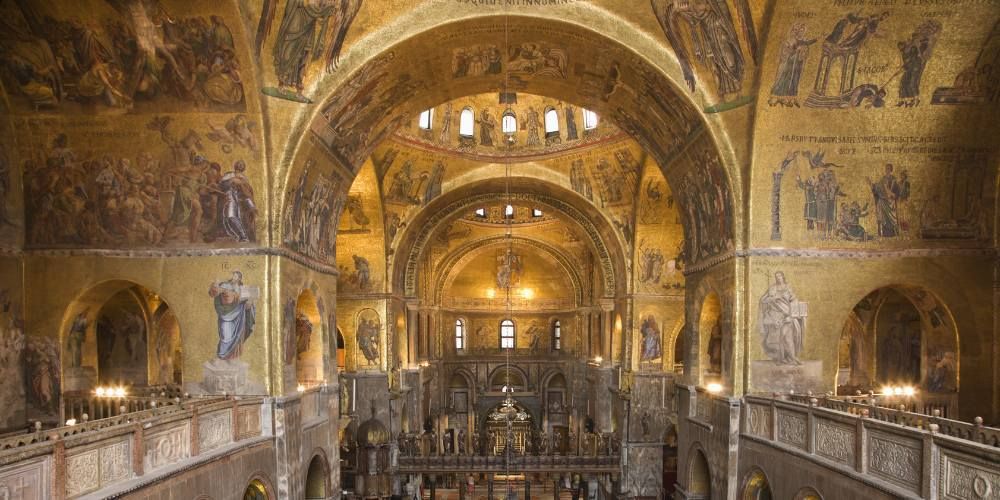
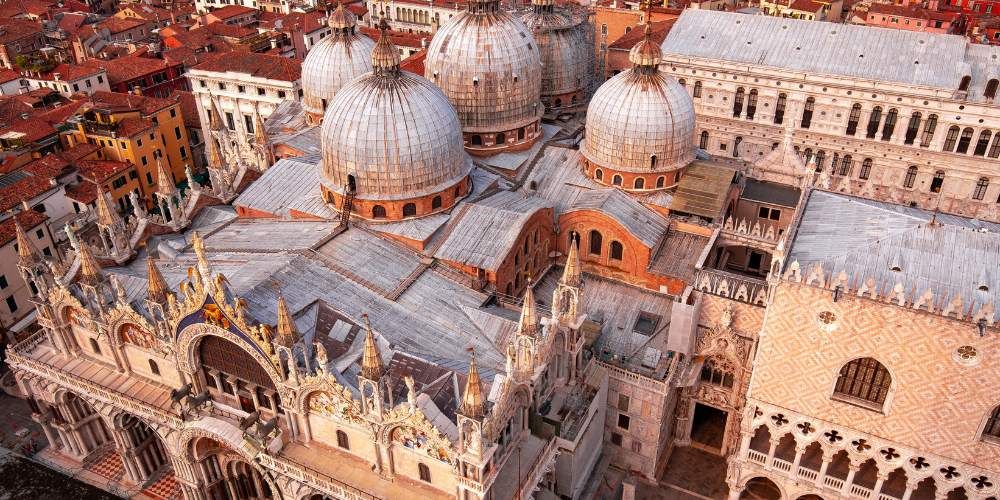
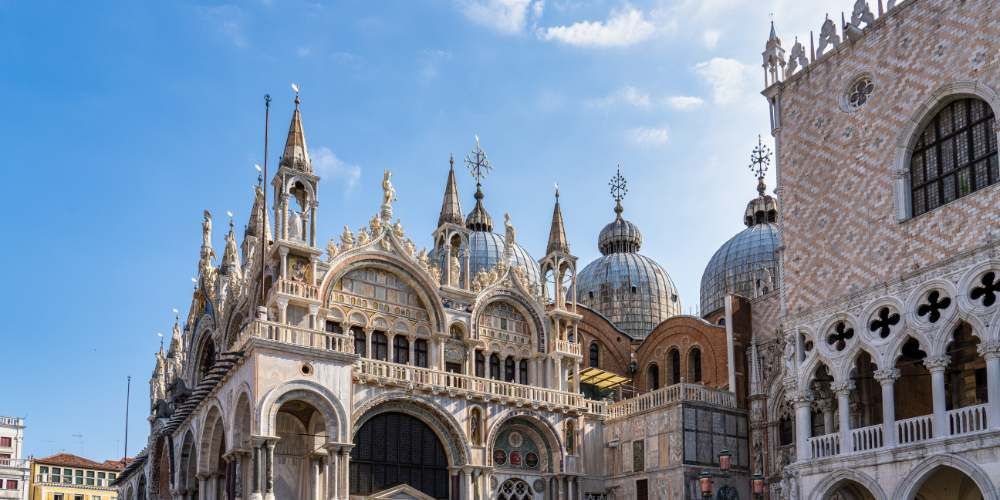
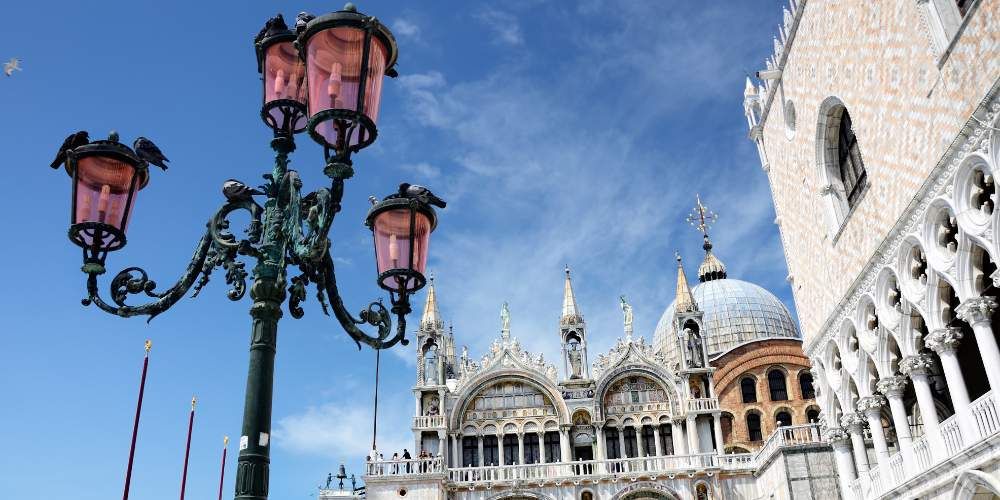
Elisa Borgato
Visit the shining Basilica of St. Mark’s with us! We’ll share with you all the most useful info in this comprehensive guide!